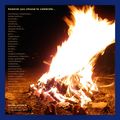21 Dec Solstice in Telluride
 The Winter Solstice is one of two times of year when the sun is at its greatest distance from the celestial equator. The summer solstice in the Northern Hemisphere occurs about June 21, when the sun is in the zenith at the Tropic of Cancer. The winter solstice occurs today, December 21, when the sun is over the Tropic of Capricorn. The summer solstice is the longest day of the year and the winter solstice is the shortest. The winter solstice is also the true Yule, which in pagan times and pre-historic culture did not involve a baby Jesus, a manger, wise men, or angels on high.
The Winter Solstice is one of two times of year when the sun is at its greatest distance from the celestial equator. The summer solstice in the Northern Hemisphere occurs about June 21, when the sun is in the zenith at the Tropic of Cancer. The winter solstice occurs today, December 21, when the sun is over the Tropic of Capricorn. The summer solstice is the longest day of the year and the winter solstice is the shortest. The winter solstice is also the true Yule, which in pagan times and pre-historic culture did not involve a baby Jesus, a manger, wise men, or angels on high.
Ancient people celebrated the time between Samhain (October 31, now Halloween) and Imbolc (February 1) as the seed time of the year. At Samhain, the aging God died. Every year at Yule or Christmas, he was reborn through the Goddess – or Mary, Mother of God. (And that's where ancient Christians got the idea that God came down from heaven to be reborn as flesh on earth.)
On the eve of the winter solstice, the Yule log was the center of the celebration. Later it was replaced by a Yule tree, but instead of burning it like the log, candles or lights) were lit on its branches. The evergreen holly and mistletoe all symbolize fertility and everlasting light.
Winter solstice is a celebration of the sacredness of one's body, and its capacity to survive and renew itself, to be reborn. The word "Yule" comes from the Germanic "yula" meaning "wheel." Life is the changing seasons and cycle of light, death and birth.
This is literally and metaphorically the lowest, darkest time of year. From now forward, things are meant to look up, start over. From Telluride's Main Street to the gods of the Beltway and Wall Street.
Merry Solstice.
(thanks, Jody Shike Wright, for sending along the image)


Sorry, the comment form is closed at this time.